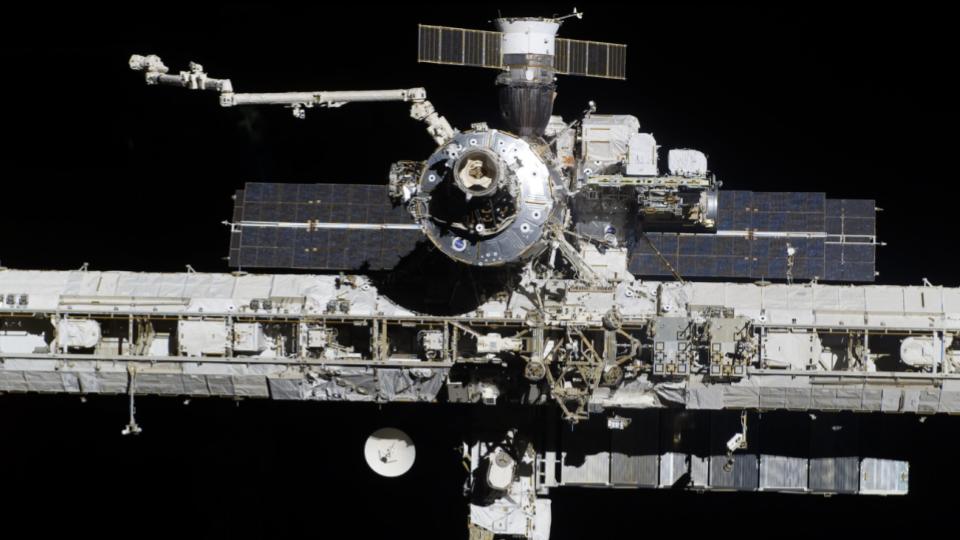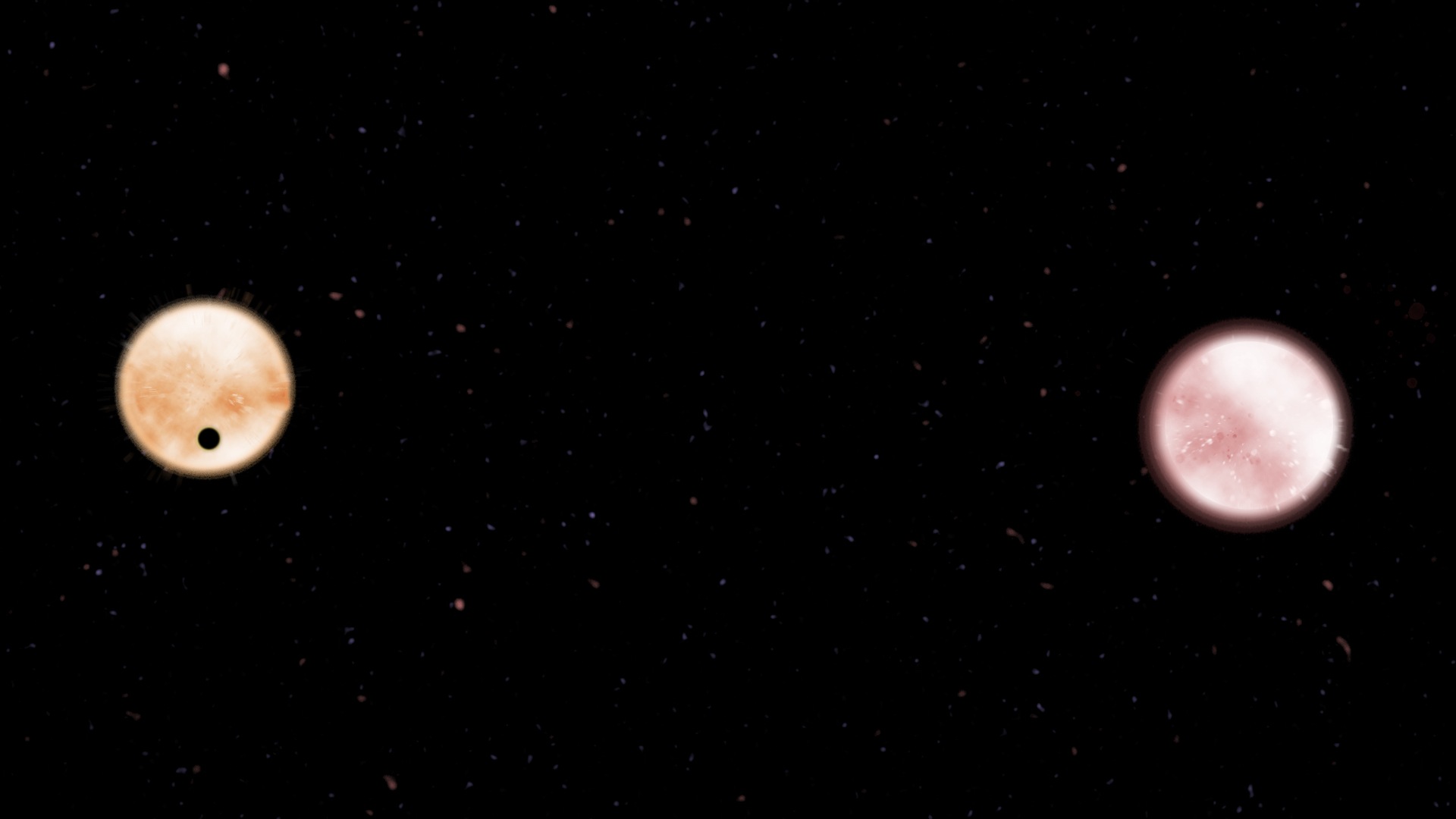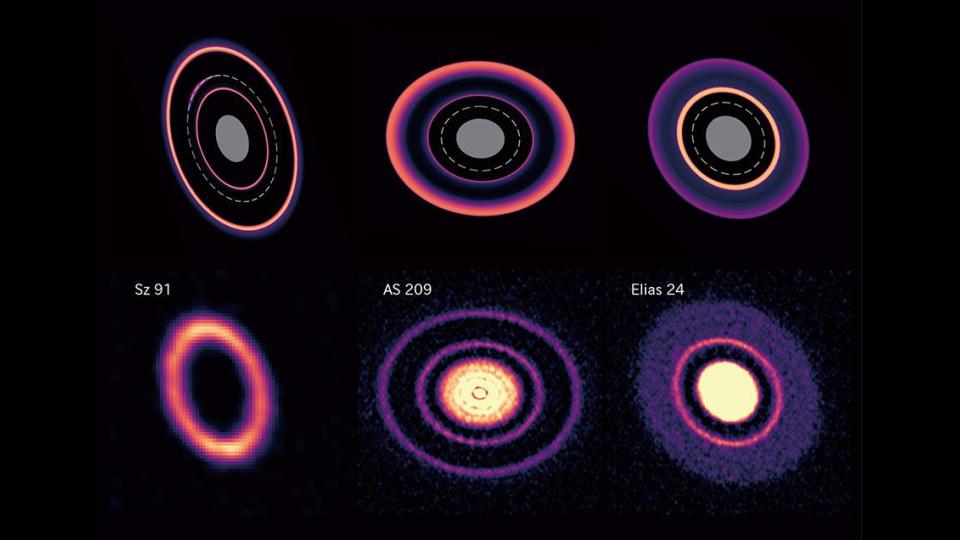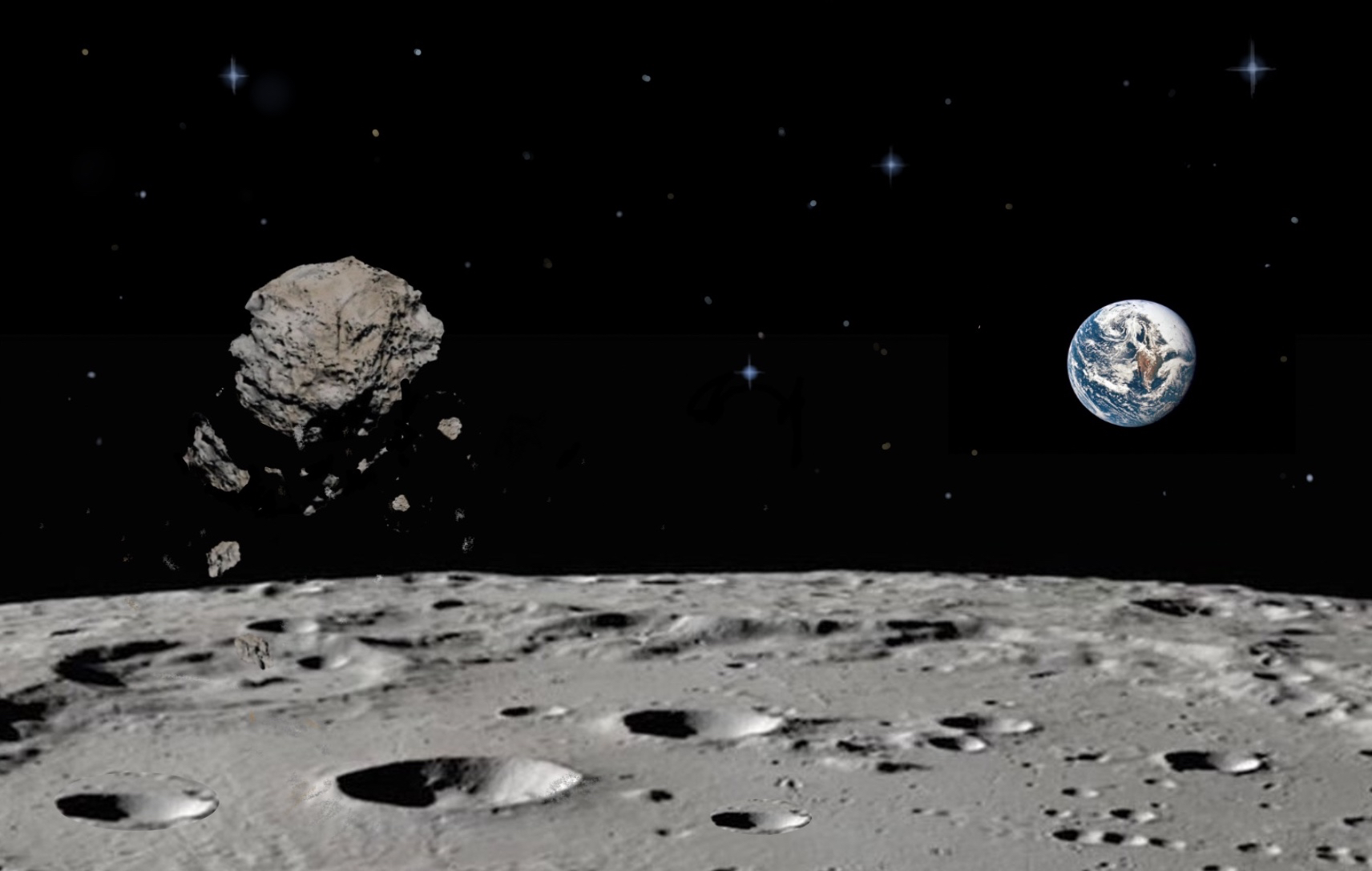After five years of observations, researchers have found that the quasi-satellite Kamo’oalewa, which currently orbits the Earth, is similar to a lunar sample collected during the Apollo 14 mission. Plus, Russia blows up a satellite, TESS finds a circumbinary planet, and we interview Dr. Gail Christeson of the University of Texas, Austin, about mapping the Chicxulub crater.
Podcast
Show Notes
Russians destroy satellite, endanger ISS
Circumbinary planet discovered in TESS data
- PSI press release
- “TIC 172900988: A Transiting Circumbinary Planet Detected in One Sector of TESS Data,” Veselin B. Kostov et al., 2021 November 10, The Astronomical Journal
Explained: Missing planets in ring systems
- NAOJ press release
- “Dust Rings as a Footprint of Planet Formation in a Protoplanetary Disk,” Kazuhiro D. Kanagawa, Takayuki Muto, and Hidekazu Tanaka, 2021 November 12, The Astrophysical Journal
Quasi-satellite of Earth has Lunar-like material
- PSI press release
- “Lunar-like silicate material forms the Earth quasi-satellite (469219) 2016 HO3 Kamoʻoalewa,” Benjamin N. L. Sharkey et al., 2021 November 11, Nature Communications Earth & Environment
Mapping the Chicxulub impact crater
- “Mapping the Chicxulub Impact Stratigraphy and Peak Ring Using Drilling and Seismic Data,” G. L. Christeson, J. V. Morgan, and S. P. S. Gulick, 2021 August 3, JGR Planets
Transcript
Hello and welcome to the Daily Space. I am your host Dr. Pamela Gay.
And I am your host Beth Johnson.
And we are here to put science in your brain.
Today, we are pleased to bring you a special guest Dr. Gail Christeson from the University of Texas Institute for Geophysics, who is the lead author on a recent paper mapping the Chicxulub impact crater.
But before the interview, let’s look at the news.

As a space news show, we are able to spend most of our time happily ignoring global politics, economics, and stories related to humans being other than scientific in how they act. We can’t always do that, however, and in today’s first story, we are reminded that rockets are really no different than missiles, and both can do harm far more easily than they can do good.
Early Monday morning, November 15, Russia launched a missile from the Plesetsk launch site on a trajectory that would intersect the orbit of the defunct Cosmos 1408 satellite in low-Earth orbit (LEO). This was a test of Russia’s anti-satellite launch capabilities, and it was successful. The 2200-kilogram former surveillance satellite was reduced to a cloud of debris with over 1,500 trackable pieces. This expanding cloud of shrapnel intersects the orbits of both the International Space Station (ISS) and China’s Tiangong space station. While it is unknown what actions may have occurred on the Chinese space station, the U.S. and Russian astronauts took shelter in the Soyuz and Dragon capsules, which are more robust than the typical space station module.
NASA administrator Bob Nelson is quoted as saying he believed the Russian Space Agency “didn’t know anything about this”, and per the New York Times, “had any of those known about it, they should’ve been raising Cain because of the threats to the astronauts and cosmonauts on the space station.”
As of Tuesday morning, the astronauts had returned to the ISS from the capsules but were continuing to keep doors between capsules closed to reduce the possibility of a collision causing complete loss of the station. The ISS is passing through the debris cloud roughly once an hour.
In addition to creating a direct threat to the lives of astronauts on the ISS and Tiangong, this debris is also going to endanger all the other missions orbiting in LEO, with Starlink satellites included in the mix. This is perhaps the definition of a hot mess in orbit, and satellite operators around the world are watching as tracking solutions come in.
This is just the latest in a steady stream of nations showing they have the capability to destroy satellites. In 2007, China destroyed a 750-kg weather satellite and created more than 3,000 detectable pieces of debris. In 2008, the U.S. destroyed a defunct National Reconnaissance Office satellite, creating 400 pieces of trackable debris, and India performed a similar scale test in 2019.
It is difficult for the U.S. to condemn another nation for doing something we have already done, but the U.S. has condemned Russia’s actions.
The timing of this particular test is troubling. The number of satellites in orbit has vastly changed since the U.S. and China tests in the 20-aughts. This new test is taking place with vast numbers of Starlinks, OneWeb, and other satellite internet constellations in orbits intersecting with the debris. While this particular incident is unlikely to trigger a chain reaction of collisions – an effect named the Kessler Syndrome – a great deal of orbital maneuvering is going to be needed to avoid collisions, and that will use up fuel and shorten the life expectancy of spacecraft.
Political watchers also point out that this test occurred at the same time that Russia has built up troops on their border with Ukraine. As a Gen-X kid who read far too much Tom Clancy, I have to admit this scares the pants off me. Hopefully, this was just a flex, and the worst that will happen in the coming days and years is a shortened life for some of those easy to replace Starlinks.

We had originally planned to cover some climate change news today, but we’ve decided new updates on planetary problems can wait. Instead, let’s imagine an amazing star system in which a large hot Jupiter orbits a pair of stars. This terribly named system, TIC 172900988, is the first system in which a planet has been observed to pass in front of two different stars during a TESS observing run.
The Transiting Exoplanet Survey Satellite (TESS) mission observes different regions of the sky for 27 days at a time to look for planets transiting in front of their host star. During these transits, we receive slightly less light, in a distinctive way that is consistent with a round object slowly moving into and out of the light of a star. To confirm that we’re seeing a planet and not a deceptive star spot or other phenomena, astronomers want to see three transits spaced out in a way consistent with a world circling its star. With just a 27-day window per observing set, TESS can only do this for worlds on exceedingly tiny orbits or in very special cases.
And it turns out, one planet passing in front of two stars is one of the special cases.
The two stars in this system are both about 30% larger than the Sun, while the planet appears to be about the size of Jupiter. While the entire orbit of the planets takes less than a year, it only took the planet five days to go from blocking the slightly larger star to blocking the slightly smaller star. But in itself, these transits are only enough to say “there is probably something here”, but it isn’t enough to say “there is definitely a planet here.”
And this is where data archives are so important. This paper is published in The Astronomical Journal with lead author Veselin Kostov, and the paper’s abstract notes: Archival data from ASAS-SN, Evryscope, KELT, and SuperWASP reveal a prominent [motion of the long axis] of the binary orbit, caused by the dynamical interactions between the binary and the planet.
The stars orbit in an ellipse, and over time, the planet changes the alignment of the ellipse and reveals itself even when we can’t see it. Luckily, thanks to some artwork [Ed. note: Courtesty of Dr. Pamela Gay], we can at least imagine this system with one Jupiter-sized world orbiting two hot bright stars.

In the past decade, we’ve developed amazing capacities to directly image planetary systems forming around young stars. With the Atacama Large Millimeter/submillimeter Array (ALMA) in particular, we have seen amazing systems with delicate ring structures that sometimes even have knots of material thought to be planets.
It’s the “sometimes” in that statement that is a bit troubling.
We like to think that planetary formation is a nice clean process. Giant molecular cloud starts to collapse and fragment. The fragments will spin and flatten as they collapse, with a star taking shape in the center, and planets cleaning out rings in the disk as they gather up their own mass. Over time, the star will brighten and push out leftover remains, the system will be left with some number of planets, maybe an asteroid belt, and icy stuff out in the outskirts.
It’s a nice picture. It is also overly idealistic. Solar system formation is a violent, planet-hit-planet kind of process, and thanks to a new paper in The Astrophysical Journal and led by Kazuhiro Kanagawa, we are learning that the gravitational interactions between newly formed planets and their surrounding rings of unused material migrate planets into the centers of gaps where we may not see them.
This work was done using supercomputers to simulate all the motions of gas, dust, and forming planets in a variety of systems and evolve those simulations to match actual systems observed by ALMA. Three different planet and ring stages were uncovered in these simulations, and here I quote from the NAOJ release: In Phase I, the initial ring remains intact as the planet moves inwards. In Phase II, the initial ring begins to deform and a second ring starts forming at the new location of the planet. In Phase III, the initial ring disappears and only the latter ring remains.
These results help us understand why planets are only rarely spotted interacting next to rings.
Unfortunately, we are only able to really see the outer parts of disks clearly and resolve different structures at great distances from stars. It is hoped that the next generation of space and ground telescopes will allow us to understand the inner workings of systems more and verify that our simulations match the reality of planet formation at all distances from a star.

One of the weird fallacies of our knowledge of the solar system is the idea that the Earth only has one moon. Wait, what? No, it’s true. The Earth has other natural satellites than the Moon. They’re not on the same order as the Moon, though, so they’re called quasi-satellites, and Earth currently has five of them. We say ‘currently’ because these bodies are small and usually have orbital characteristics that deteriorate until the tiny moons escape the Earth’s gravity well.
Of the five quasi-satellites we know of at the moment, the one with the most stable orbit is Kamo’oalewa, a 50-meter diameter near-Earth object with a rapid rotation of thirty minutes that can come within 14.4 million kilometers of our home planet. And while its orbit is stable-ish, the geometry of the orbit with Earth makes it difficult to observe. A team of researchers has collected about five years’ worth of observational data from the Large Binocular Telescope and the Lowell Discovery Telescope. They collected both photometric and spectroscopic data in the hopes of understanding Kamo’oalewa.
What they found are spectral characteristics that show silicate minerals, the stuff that makes up most of the rocks here on the Earth and on other rocky bodies, as well as a bunch of space weathering. Planetary Science Institute (PSI) associate research scientist and co-author Juan Sanchez explains: This means that the optical properties and physical structure of the surface have been modified by micrometeorite bombardment and solar wind particles.
Then when the team dug even more into the spectroscopic data and compared it to the spectra of meteorite samples and other near-Earth objects, they found similarities between the spectrum Kamo’oalewa and a lunar sample collected during the Apollo 14 mission. This means, interestingly, that this temporary moon could have come from the Moon itself, possibly as ejecta from an impact. It could also have been simply captured by the Earth’s gravity well from the rest of the near-Earth asteroids.
The team is now planning for a sample return mission to Kamo’oalewa, with a possible launch date in 2025.
Interview
Joining me now is Dr. Gail Christeson, a senior research scientist at the University of Texas Austin and associate director of the university’s Institute for Geophysics. Dr. Christeson has focused her research on the crustal structure of various geological environments, including the formation and evolution of oceanic crust, the size and morphology of the Chicxulub impact crater, and the rifting history of the Gulf of Mexico. She uses wide-angle seismic data and tomography and is the lead author on a recently published paper in the Journal of Geophysical Research: Planets where she analyzed such data to map the Chicxulub impact crater.
Thank you for joining us today, Dr. Christeson, and welcome.
[Transcript unavailable.]
This has been the Daily Space.
You can find more information on all our stories, including images, at DailySpace.org. As always, we’re here thanks to the donations of people like you. If you like our content, please consider joining our Patreon at Patreon.com/CosmoQuestX.
Credits
Written by Pamela Gay and Beth Johnson
Hosted by Pamela Gay and Beth Johnson
Audio and Video Editing by Ally Pelphrey
Content Editing by Beth Johnson
Intro and Outro music by Kevin MacLeod, https://incompetech.com/music/


 We record most shows live, on Twitch. Follow us today to get alerts when we go live.
We record most shows live, on Twitch. Follow us today to get alerts when we go live.